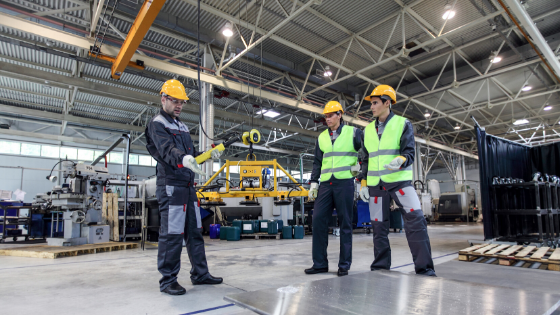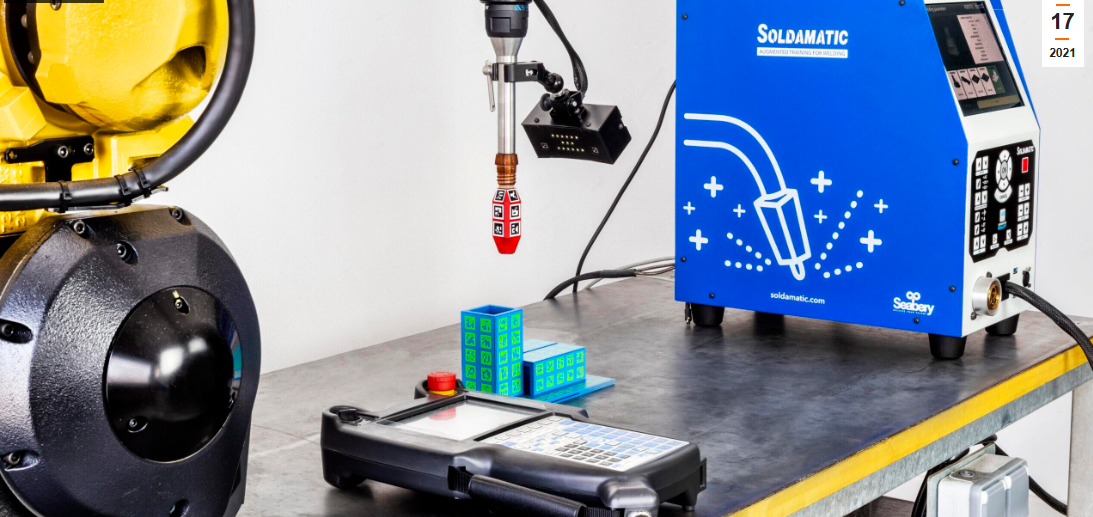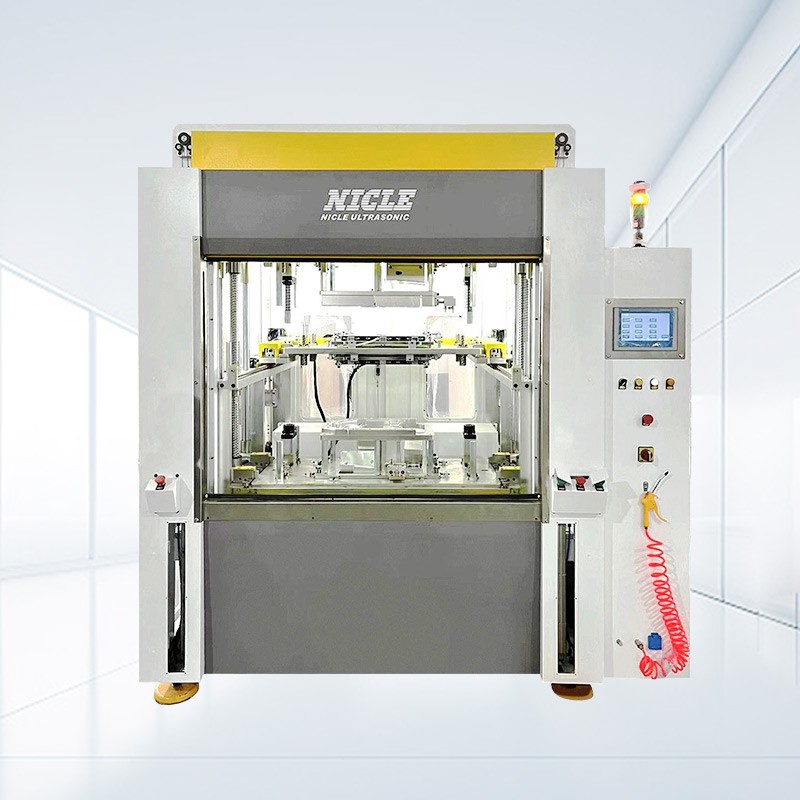GENERAL
Building a Strong Safety Culture: A Comprehensive Guide

Building a strong safety culture requires commitment from all levels of an organization, starting with leadership. It involves clear communication about safety policies, continuous training, and fostering an environment where employees feel empowered to report hazards. Setting measurable safety goals and recognizing safe behaviors can encourage active participation. Regular safety audits and reviews help identify risks, and addressing them promptly demonstrates accountability. A collaborative approach ensures that safety becomes ingrained in everyday operations, reducing accidents and promoting a healthy, secure work environment for all employees.
Introduction
Creating a strong safety culture is paramount for any organization aiming to protect its employees and ensure a productive work environment. A proactive safety culture in the workplace minimizes accidents and injuries and enhances morale, productivity, and job satisfaction. This culture reflects shared values and practices emphasizing prevention rather than reaction, integrating safety into all areas of the organization’s operations and making it a core priority. This article will cover in-depth tactics and advice on creating a strong workplace safety culture.
The Importance of Safety Culture
Safety culture refers to the shared beliefs, practices, and mindsets that determine how an organization approaches safety. An influential safety culture prioritizes safety management systems, continuous learning, and proactive measures to prevent accidents before they occur. This proactive attitude is crucial as it signifies a shift from merely complying with safety regulations to embedding safety as a core value within the organization. Research has shown that companies with strong safety cultures experience fewer workplace accidents, lower staff turnover, and higher levels of job satisfaction. Furthermore, a robust safety culture can enhance an organization’s reputation and reduce legal and financial liabilities.
Actionable Strategies to Foster a Safety Culture
Leadership Commitment
Establishing a safety culture requires strong leadership. When management visibly prioritizes safety, employees are more likely to follow suit. This means allocating resources, setting clear safety expectations, and leading by example. By starting safety campaigns, attending safety training sessions, and often bringing up safety issues at meetings, leaders may show their dedication to the cause. To further emphasize their commitment, leaders should celebrate safety milestones and recognize employees contributing to a safer workplace. This visible and active involvement from leadership sets a precedent and builds trust among employees, showing that safety is a priority from the top down.
Comprehensive Training Programs
Training regimens that are comprehensive and consistent are crucial. Workers need to know the ins and outs of safety practices. Incorporating hands-on training, interactive modules, and periodic refreshers ensures that information remains fresh and top of mind. Effective training programs are tailored to different organizational roles’ specific needs and risks. For instance, new employees might require a comprehensive onboarding program, while experienced staff benefit from advanced or specialized training sessions. Supplemental resources such as safety bulletins, instructional videos, and safety drills can reinforce the training. Employers may maintain a high level of worker readiness and safety awareness by making training a continuous process instead of a one-time occurrence.
Open Communication Channels
Encourage open communication about safety concerns and suggestions. Establishing anonymous reporting systems can help employees feel safer voicing potential hazards. CDC’s guide on safety culture emphasizes the importance of fostering an environment where everyone feels responsible for safety. Regular safety meetings and suggestion boxes are practical tools for gathering feedback and encouraging dialogue. Moreover, promptly addressing reported concerns and providing input on implemented changes reinforces the idea that employees’ voices matter. This culture of openness helps identify and mitigate risks and enhances cooperation and trust throughout the organization.
Real-Life Examples of Successful Safety Initiatives
Many companies have successfully implemented safety culture initiatives. For example, a manufacturing firm reduced workplace accidents by introducing a peer-review safety program. This program empowered employees to conduct safety audits, identify potential hazards, and recommend improvements, fostering a sense of ownership and accountability. Similarly, a healthcare organization saw improved employee health by launching a wellness program focused on ergonomics and mental health support. With the help of this comprehensive approach, which addressed physical and psychological health, the workforce became more resilient and engaged. Another notable example is a construction company that introduced a safety incentive program, rewarding teams for maintaining accident-free records, which instilled a competitive spirit and heightened safety awareness.
Continuous Improvement Through Data and Feedback
Gathering data and feedback is crucial for continuous improvement. Regularly review accident reports, conduct safety audits, and utilize employee surveys to gather insights. Use this data to refine existing safety practices and develop new ones, ensuring your safety culture evolves with changing needs. Implementing a robust incident tracking system can help identify trends and root causes while comparing data across departments and highlighting areas needing attention. Engaging with external safety consultants can provide fresh perspectives and innovative solutions. Organizations may maintain a dynamic and successful safety program and remain ahead of new hazards by cultivating a learning and continuous improvement culture.
Conclusion
Incorporating these strategies can significantly enhance your workplace safety culture. From leadership commitment to continual development, every element is required to build a safe and effective work environment. By prioritizing safety, you empower employees and build a foundation for long-term success. Remember, a strong safety culture is an ongoing journey that requires dedication and adaptability. With persistent effort and a proactive attitude, you can create an atmosphere where safety is engrained in every activity and decision, eventually resulting in a happier, healthier, and more productive workforce.
GENERAL
The Future of Hot Plate Welding: Emerging Trends and Innovations

Hot plate welding is a widely used process for joining thermoplastic components, particularly in industries like automotive, medical, and consumer goods. As technology advances, new trends are shaping the future of this process, improving efficiency, precision, and sustainability.
Innovations such as automation, artificial intelligence (AI), and advanced materials are transforming hot plate welding solutions, making them more adaptable to modern manufacturing needs.

This article explores the latest trends and advancements in hot plate welding plastic solutions, highlighting how they are redefining the way industries approach plastic joining.
1. The Rise of Automation in Hot Plate Welding
Automation is playing a crucial role in enhancing hot plate welding equipment solutions. By integrating robotic systems and smart controls, manufacturers can achieve greater precision, consistency, and efficiency in the welding process.
Key Benefits of Automation:
- Increased Production Speed – Automated welding systems reduce cycle times and enhance throughput.
- Consistent Weld Quality – Eliminates human errors and ensures repeatable results.
- Reduced Labor Costs – Minimises the need for manual intervention, allowing skilled workers to focus on higher-value tasks.
Many manufacturers are investing in fully automated hot plate welding machine solutions that integrate sensors and real-time monitoring to adjust welding parameters dynamically. This trend is making the process more reliable and cost-effective for large-scale production.
2. AI and Machine Learning in Hot Plate Welding
Artificial intelligence (AI) and machine learning are transforming hot plate welding of plastic parts solutions by enabling predictive maintenance, real-time quality control, and process optimization.
How AI is Impacting Hot Plate Welding:
- Defect Detection – AI-powered vision systems can detect imperfections in welds and make adjustments in real time.
- Predictive Maintenance – Machine learning algorithms analyze welding equipment performance and predict potential failures before they occur.
- Adaptive Welding Parameters – AI-driven systems can modify welding settings based on material properties and environmental conditions.
These innovations reduce downtime and improve the overall efficiency of hot plate welding solutions, leading to higher-quality products and lower operational costs.
3. Advancements in Materials for Hot Plate Welding
The development of new thermoplastic materials is influencing the evolution of hot plate welding plastic solutions. Manufacturers are exploring high-performance polymers that offer better heat resistance, durability, and sustainability.
New Material Trends:
- Bio-Based and Recyclable Plastics – As sustainability becomes a priority, industries are shifting toward eco-friendly thermoplastics that can be welded efficiently.
- High-Temperature Resistant Polymers – Advanced plastics with improved thermal stability are expanding the range of applications for hot plate welding.
- Multi-Material Welding – Innovations in material science are enabling the welding of dissimilar plastics, broadening design possibilities.
These material advancements are pushing the boundaries of what can be achieved with hot plate welding machine solutions, opening up new possibilities in product development.
4. Enhanced Precision Through Digital Twin Technology
Digital twin technology is revolutionising hot plate welding equipment solutions by providing a virtual representation of the welding process. This technology allows manufacturers to simulate and optimise welding conditions before actual production.
Benefits of Digital Twin Integration:
- Process Optimisation – Engineers can fine-tune welding parameters digitally to achieve the best results.
- Reduced Waste – Minimises trial-and-error welding, leading to less material wastage.
- Remote Monitoring and Control –Allows real-time tracking of welding performance and troubleshooting from any location.
This technology is particularly useful in car plastic tank hot plate welding, where precision and quality control are paramount. Car plastic tank hot plate welding is a great example of how digital advancements are improving welding reliability and efficiency.
5. Sustainability and Energy Efficiency in Hot Plate Welding
As industries focus on reducing their environmental impact, hot plate welding plastic solutions are evolving to be more energy-efficient and sustainable.
Sustainable Innovations in Hot Plate Welding:
- Energy-Efficient Heating Systems – New heating elements consume less power while maintaining optimal welding performance.
- Emission Reduction Technologies – Improved ventilation and filtration systems reduce harmful emissions during welding.
- Recyclable Welding Fixtures – The use of recyclable and reusable materials in welding fixtures minimises industrial waste.
These sustainable practices are making hot plate welding machine solutions more eco-friendly, helping manufacturers comply with environmental regulations while reducing costs.
6. The Integration of IoT in Hot Plate Welding Machines
The Internet of Things (IoT) is enhancing hot plate welding equipment solutions by connecting machines to digital networks, allowing for real-time data exchange and remote management.
IoT Applications in Hot Plate Welding:
- Remote Diagnostics – IoT-enabled machines can detect performance issues and send alerts before failures occur.
- Cloud-Based Data Storage – Welding data can be stored and analysed to improve production efficiency.
- Smart Control Systems – Operators can adjust welding parameters remotely using mobile or desktop applications.
With IoT integration, manufacturers can achieve greater flexibility and control over their hot plate welding solutions, leading to improved productivity and reduced downtime.
7. The Future of Customisation in Hot Plate Welding
Customisation is becoming increasingly important in hot plate welding of plastic parts solutions, as industries demand tailored welding systems for unique applications.
Customisation Trends:
- Modular Welding Systems – Machines designed with interchangeable components for different welding applications.
- Adjustable Welding Cycles – Customised settings for varying plastic thickness and material types.
- User-Friendly Interfaces – Intuitive touchscreens and software interfaces simplify operation and training.
Customised welding solutions provide manufacturers with greater flexibility and efficiency in their production lines.
For businesses looking for advanced hot plate welding plastic solutions, it’s essential to choose equipment that aligns with their specific manufacturing needs. Hot plate welding plastic solution options continue to evolve, offering enhanced flexibility and efficiency.
8. The Growing Demand for Hybrid Welding Techniques
Hybrid welding techniques, which combine hot plate welding plastic solutions with other welding methods, are gaining traction.
Popular Hybrid Welding Methods:
- Infrared and Hot Plate Welding – Uses infrared heating for preheating before applying traditional hot plate welding.
- Ultrasonic and Hot Plate Welding – A combination of ultrasonic energy and heat for improved bonding strength.
- Laser-Assisted Hot Plate Welding – Enhances precision by integrating laser energy with hot plate welding.
These hybrid techniques improve weld strength, reduce cycle times, and expand the possibilities of hot plate welding equipment solutions.
9. Global Market Trends and Future Projections
The demand for hot plate welding machine solutions is expected to grow, driven by advancements in automation, sustainability, and material science.
Industry Projections:
- Automotive Sector Growth – Increasing use of thermoplastic components in electric vehicles (EVs) will drive demand for hot plate welding.
- Medical Industry Expansion – Precision welding is critical for medical devices, leading to higher adoption of AI-powered welding machines.
- Smart Manufacturing Adoption – More manufacturers will integrate digital and IoT-based welding solutions for better efficiency.
As industries continue to evolve, hot plate welding of plastic parts solutions will remain a cornerstone of modern manufacturing, adapting to new technologies and market demands.
Conclusion
The future of hot plate welding solutions is being shaped by automation, AI, advanced materials, and sustainability efforts. As manufacturers seek to improve efficiency, reduce costs, and enhance weld quality, new technologies are driving innovation in hot plate welding plastic solutions.
From IoT-connected machines to hybrid welding techniques, these advancements are redefining how industries approach hot plate welding equipment solutions. By embracing these emerging trends, manufacturers can stay ahead of the competition and optimise their production processes for the future.
GENERAL
The Future of Urban Living: Designing Homes for Today’s City Dwellers

Urban environments are experiencing rapid growth, forcing a rethinking of residential development. As people migrate to cities, the pressure to create sustainable spaces intensifies. Urban living is more than just a place to live; it embodies a lifestyle filled with cultural richness and opportunities. To satisfy the many demands of city people, developers, and architects must strike a balance between innovation and pragmatism. Choosing an urban residence involves finding harmony between convenience and community, enhancing the quality of life. Options like Charlotte Homes For Sale offer modern, strategic solutions in dynamic metropolitan environments, showcasing how contemporary design integrates with city life.
Adapting to Smaller Spaces
Urban living presents the challenge of optimizing limited spaces, making innovative design essential. Even small apartments can become functional havens using multipurpose furniture like sofa beds and foldable desks. The trend of “micro-living” embraces simplicity and design tricks to create the illusion of spaciousness, showing that big city dreams can fit in small packages.
Importance of Sustainable Living
Environmental sustainability is now fundamental in modern housing design, especially in urban areas where conserving resources is crucial. Developers are increasingly using eco-friendly materials and technologies to reduce the environmental impact of buildings, leading to lower energy costs and savings for residents. While green roofs offer nature and insulation in urban environments, green features like solar panels and rainwater harvesting are increasingly commonplace.
The Role of Technology in Urban Homes
Technology has transformed how we interact with homes, especially in urban areas. Smart home systems, like automated lighting, climate control, and security, are now essential for modern living. These advancements enhance the efficiency of living spaces, allowing for easy adjustments to personal preferences. For instance, you can adjust the thermostat with a voice command or secure your home remotely via a smartphone. This integration improves convenience and boosts security, enabling residents to manage their environments easily.
Community-Driven Urban Design
The concept of community is central to modern urban planning. Residential projects now include communal spaces promoting interaction and fostering residents’ belonging. Planners recognize that social connections enhance well-being and resilience. Community gardens, shared terraces, and recreational areas offer opportunities for socializing and building stronger ties. This inclusive approach encourages diversity and collaboration, which is vital for vibrant urban cultures and a cohesive urban fabric.
Affordability and Access in the Urban Housing Market
Cities offer numerous opportunities, but housing costs present a significant challenge. Balancing affordability and quality is essential in urban housing policies. Innovative financial solutions and inclusive policies are fostering equitable access to homes. Efforts to incentivize developers to include affordable units and explore creative financing options aim to make homeownership accessible to a wider demographic. By promoting inclusivity, cities strive to maintain diversity and ensure quality urban living for all.
Trends in Urban Aesthetics and Design
Urban housing aesthetics are evolving, reflecting cultural shifts and technological advancements. The blend of minimalist designs and industrial elements highlights the uniqueness of urban environments. Interiors often showcase exposed concrete and brick alongside sleek finishes. Diverse cultural influences add vibrant colors and textures to residential spaces.
Future Prospects for Urban Living
As urbanization advances, city living evolves with futuristic features like autonomous systems that enhance our interaction with homes. The COVID-19 pandemic has shifted priorities toward resilient infrastructure and adaptable designs. Speculations suggest that virtual reality may create open-space experiences within smaller living areas. These innovations aim to redefine domestic life in cities, making living environments more versatile and human-centric in the future.
GENERAL
Emergency Septic Services: When to Call for Help

Septic systems are integral to ensuring our homes operate smoothly, managing waste, and preventing sewage from impacting our daily lives. However, like all systems, they sometimes malfunction, leading to potentially disastrous consequences. Emergency septic services become crucial in these situations, providing timely solutions to prevent health hazards and property damage. In this guide, we will explore when to call for help, what signs to look out for, and how timely intervention can save you both time and money.
Understanding Your Septic System
A septic system functions as an on-site sewage management system, which is especially vital for homes away from centralized sewage facilities. The system typically includes a septic tank, drain field, or soil absorption area. Wastewater from your home flows into the septic tank, where solids settle, and the liquid is treated and dispersed. Recognizing how this system works is essential for identifying when something is amiss. Companies like Foothill Sanitary septic specialize in the intricate details that ensure systems remain in optimal condition. With proper knowledge, homeowners can better monitor their systems, preventing issues from escalating into emergencies.
Signs You Need Emergency Septic Services
Several red flags indicate the need for immediate septic service intervention. One of the most common signs is a foul odor permeating your home or yard, which typically signals a full tank or blockages. If you observe slow drains across the household, this could indicate a clog or backed-up system. Water pooling above your septic tank or drain field is another critical warning sign, pointing to a possible system overflow or failure. Should any of these symptoms appear, contacting a professional service is crucial. Not only can ignoring these signals result in exacerbated system issues, but it can also lead to costly repairs and serious health risks. Companies experienced in emergency services, such as those handling Foothill Sanitary septic tank pump interventions, offer solutions to mitigate these risks immediately.
Steps to Take Before Help Arrives
Once you recognize the telltale signs of septic trouble, acting quickly while waiting for professional assistance is vital. First, limit water usage in your home. This includes postponing laundry, avoiding long showers, and conserving water in general to prevent additional stress on the septic system. It’s also wise to avoid flushing the toilet unnecessarily. If you notice water pooling in the yard, restrict access to the area to prevent potential health risks. Inform family members about the situation to ensure everyone is on the same page regarding water usage. While these actions don’t substitute professional repairs, they can help prevent the situation from worsening before the experts arrive.
Prevention: The Best Cure
Preventative measures are crucial in avoiding septic emergencies altogether. Regular inspections and maintenance are the frontline defenses against unexpected failures. Schedule routine checks every one to three years or as your local septic service provider recommends. Proper waste disposal is equally essential; avoid flushing non-biodegradable items such as wipes, sanitary products, or excessive grease, which can cause clogs. Maintaining a healthy balance of bacteria within the septic tank aids in breaking down solids efficiently. Homeowners should avoid using excessive amounts of antibacterial soaps or chemicals that can disrupt these beneficial bacteria. Employing these proactive strategies can significantly reduce the chance of a system breakdown.
The Role of Professional Septic Services
Despite the best preventive efforts, some septic issues may still arise, requiring the expertise of professional septic services. They perform emergency repairs and provide comprehensive assessments, identifying underlying issues that might not be immediately evident. Professionals offer solutions that go beyond the scope of DIY fixes, often utilizing advanced technology and established practices. Regular interaction with experts enables homeowners to stay informed about the condition of their systems, plan efficient maintenance schedules, and implement any necessary improvements. In addition to repair services, professionals provide valuable advice and strategies to enhance your system’s longevity and functionality.
Conclusion
Septic systems are silent champions of household waste management, but when they falter, the consequences can be severe and costly. Knowing when to call for emergency septic services is an invaluable skill for any homeowner, protecting property and health. By understanding how septic systems work, recognizing the warning signs of trouble, and taking immediate action, you can mitigate the effects of potential issues. Meanwhile, adopting preventive practices significantly reduces the likelihood of emergencies. Remember that professional septic services are your allies in maintaining efficient and healthy systems, ensuring your home remains a safe and comfortable environment.
-

 GENERAL1 year ago
GENERAL1 year agoDiscovering the Artistic Brilliance of Derpixon: A Deep Dive into their Animation and Illustration
-

 Posts1 year ago
Posts1 year agoSiegel, Cooper & Co.
-

 Lifestyle1 year ago
Lifestyle1 year agoPurenudism.com: Unveiling the Beauty of Naturist Lifestyle
-

 Lifestyle1 year ago
Lifestyle1 year agoBaddieHub: Unleashing Confidence and Style in the Ultimate Gathering Spot for the Baddie Lifestyle
-

 HEALTH1 year ago
HEALTH1 year agoTransformative Health Solutions: Unveiling the Breakthroughs of 10x Health
-

 Entertainment1 year ago
Entertainment1 year agoGeekzilla Podcast: Navigating the World of Pop Culture, Gaming, and Tech
-

 Entertainment1 year ago
Entertainment1 year agoKhatrimaza Unveiled: Exploring Cinematic Marvels and Entertainment Extravaganza
-

 BUSINESS1 year ago
BUSINESS1 year agoUnlocking the Secrets to Jacqueline Tortorice Remarkable Career and Accomplishments
